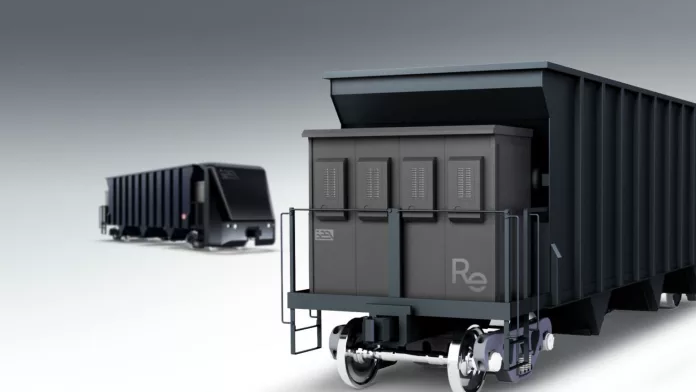The railway industry is on the brink of a significant transformation, with electric locomotives gradually edging out their fossil fuel-powered counterparts. A pioneering approach, led by innovative companies such as Missouri-based startup Intramotev, involves electrifying not just the locomotives but each railcar within the entire freight train. This progressive methodology looks set to redefine the future of rail freight transport.
The Journey to Electrification
The United States has long employed electric drive systems in locomotives, which situates the railway sector closer to the goal of full decarbonization. Despite this, the norm has been diesel generators supplying the necessary power. Intriguing shifts, such as the introduction of renewable natural gas and battery alternatives to diesel, are now gaining traction. Some private rail lines, especially those serving mining and processing industries, have welcomed these innovations, with the added perk of energy-recuperating braking systems charging on-board batteries.
Admittedly, public rail networks face more challenges, including the sheer length of freight trains, scheduling demands, and the need for comprehensive charging systems. However, institutions like the US Department of Energy‘s National Renewable Energy Laboratory argue that converting diesel locomotives to electric could be economically feasible on a relatively short timeline. An example of industry caution is evident in Wabtec, a company that has cautiously entered the electric arena with a hybrid model running on specific routes in the Northeast US.
Targeting “Captive Routes”
Companies such as Intramotev have identified opportunities within the mining sector. Intramotev’s ReVolt electric railcars were recently trialed at Iron Senergy, a firm committed to extending the lifespan of the Cumberland Coal Mine in Pennsylvania, despite broader industry decline. This integration of renewables and the broader use of electric industrial vehicles is reflective of a growing trend among fossil energy stakeholders.
The future vision includes long electric trains comprised entirely of individual ReVolt railcars, operating autonomously without a traditional locomotive. Presently, the ReVolt serves as a hybrid addition to conventional trains, reducing diesel dependency. Alongside this, Intramotev also offers the TugVolt, a separate electric railcar capable of operating independently, covering ‘first mile’ and ‘last mile’ duties.
In practice, Intramotev has successfully tested three ReVolt railcars over a 17-mile coal-hauling route in Pennsylvania, achieving a seamless integration into a hybrid electric train and marking significant milestones in fuel savings and emissions reductions.
Advancing Towards Purely Electric Trains
With the successful deployment of the ReVolt, the focus is now on gathering data on diesel reduction and understanding the full impact of this hybrid solution. Intramotev is also expanding its reach, having received funding from Michigan to potentially introduce TugVolt technology within the state’s mining operations, aligning with broader goals of industry sustainability and electrification.
The Future Path for Electric Trains
Despite the challenges, the industry shows promise for wider electrification. The TugVolt, suited for industries like mining and steel production with existing rail infrastructure, could lead the way for future all-electric long-haul trains. Fuel-cell electric locomotives are also in the running, with potential future applications identified by firms like Stadler and Ballard providing glimpse into a more sustainable rail transport sector.
Through initiatives like these, we witness the initial steps towards an electrified, sustainable future for rail transport, a direction that not only promises environmental benefits but also the revitalization of industries once hindered by outdated, carbon-intensive technologies.


























